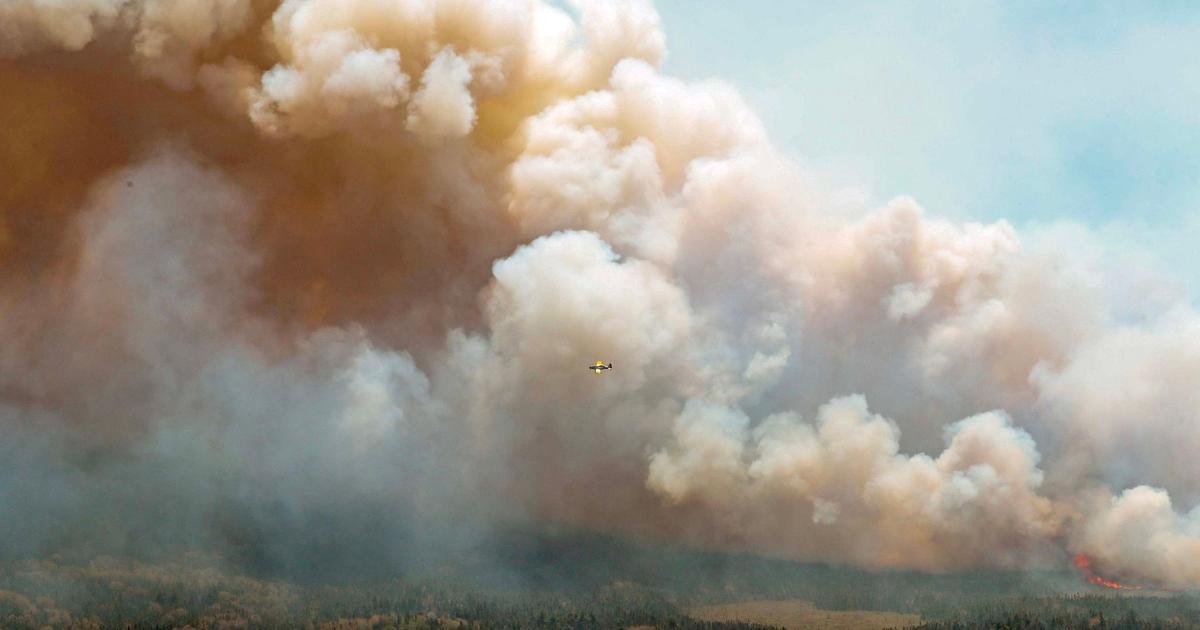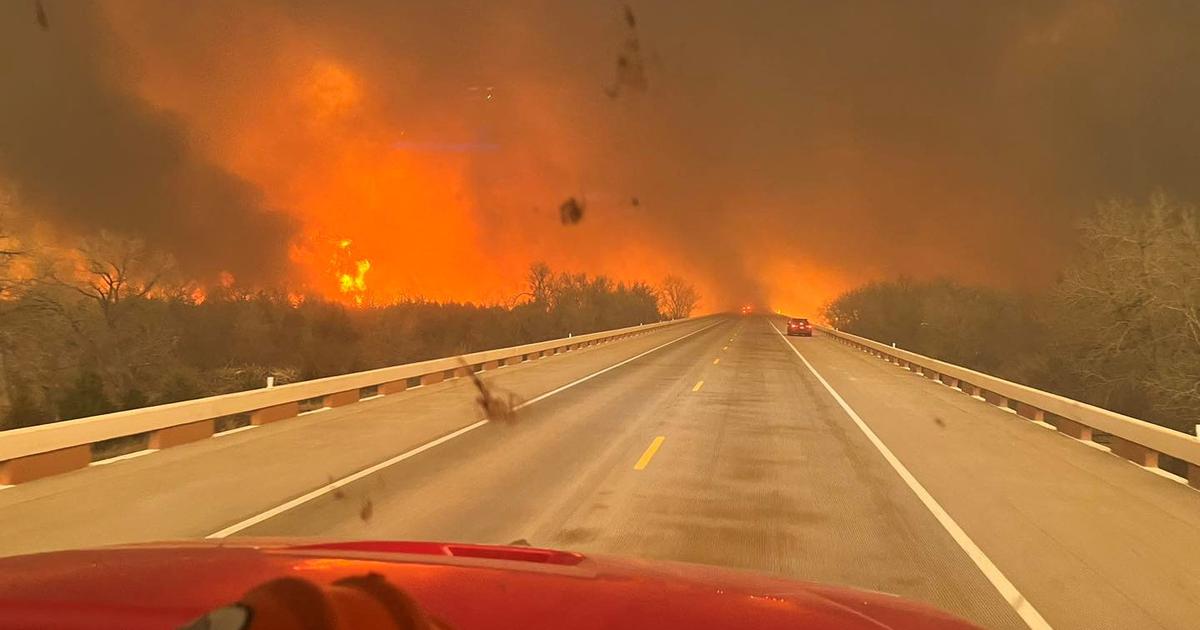2214 fires have already consumed 3.3 million hectares. Here are the terrifying data of the fires of unprecedented magnitude that have ravaged Canada for more than a month, according to the federal government. And while nearly 120,000 people have already been evacuated, another 26,200 are leaving their homes.
At the beginning of May, the west of the country goes up in flames
Alberta, a western province of the country, was the first area to ignite in early May. Since then, Canada has tried to control hundreds of forest fires by declaring a state of emergency on May 6. Nearly 30,000 people were ordered to leave their homes within days because more than two dozen fires were out of control. The Western Province, home to the world's third-largest oil reserves, trembled in the face of risk.
A landscape scorched by wildfires, in the Wild Hay region, Alberta, Canada, May 10, 2023 MEGAN ALBU / AFP
Nearly 2500 firefighters came from across Canada, as well as 400 soldiers, to try to control the fires ravaging the province of Alberta.
A consumed landscape near Entrance, in the Wild Hay region, Alberta, Canada, May 10, 2023. MEGAN ALBU / AFP
In mid-May, the fires spread to nearly four different regions: Alberta, but also Saskatchewan, British Columbia and the Northwest Territories. On May 17, Canada launched an appeal for international assistance.
Firefighters during a wildfire near Fort St. John, British Columbia, May 14, 2023. KAMLOOPS FIRE RESCUE / REUTERS
This image obtained by the National Oceanic and Atmospheric Administration shows smoke from wildfires in the western Canadian province of Alberta moving eastward on May 20, 2023 at 17:20UTC. AFP PHOTO / NASA/GOES
Nova Scotia catches fire in late May
At the end of May, it is the east of the country that becomes the epicenter of the fires. Nearly 16,000 people are forced to leave their homes in the suburbs northeast of Halifax, Nova Scotia. The flames threatened the city of more than 400,000 inhabitants.
Smoke rises from a wildfire near Barrington Lake in Shelburne County, Nova Scotia, May 29, 2023. Handout / Nova Scotia Government / AFP
Smoke rises from a wildfire near Barrington Lake in Shelburne County, Nova Scotia, May 29, 2023. Handout / Nova Scotia Government / AFP
Zach Rafuse, Port Williams firefighter with the Halifax Regional Fire and Emergency Department, works to extinguish fires in the Tantallon area on May 30, 2023. HANDOUT / AFPHandout / Nova Scotia Government / AFP
Aerial view of the fires in Shelburne County, May 31, 2023. Handout / Nova Scotia Government / AFP
In early June, rain came as a relief to Nova Scotia firefighters who were trying to extinguish the flames. 85% of the wildfire that threatened Halifax was brought under control, moving it from "out of control" to "stable".
From flames in Quebec to smoke in New York
But Canada could not afford a break. Hundreds of fires were active in Quebec, a province west of Nova Scotia.
An aerial view of forest fires in Chibougamau, northern Quebec, June 5, 2023. KEVIN BURTON / AFP
And the smoke from these fires moved more than 800 km south of Quebec City, until it darkened New York.
This satellite image from NASA's Earth Observatory, taken on June 7, 2023, shows smoke sweeping New York and Pennsylvania. AFP
The city of more than 8.5 million people was shrouded in a disturbing yellow-orange fog. The city became for a few hours the most polluted in the world, surpassing New Delhi.
The Statue of Liberty shrouded in a haze of smoke from forest fires in Canada, June 7, 2023 in New York City. DAVID DEE DELGADO / AFP
The Empire State Building plunged into an orange fog, June 7, 2023 in New York. DAVID DEE DELGADO / AFP
Authorities have advised at-risk people to stay home and protect themselves with a mask. "If you are a New Yorker with heart or respiratory problems, be careful when you are outdoors," "try to limit outdoor activities today to what is absolutely necessary," they warned on Twitter.
The skyline of lower Manhattan is seen by pedestrians as smoke from Canada's wildfires causes foggy conditions in New York City on June 7, 2023. ANGELA WEISS / AFP
214 fires are still active across the country, including 93 out of control, according to Prime Minister Justin Trudeau. Joe Biden offered his help to Canada on Wednesday, June 7. "The president has directed his team to deploy all federal firefighting capabilities that can quickly help extinguish fires affecting Canadian and American communities," a White House statement said.
A plane passes in front of the sun, as smoke from wildfires in Canada causes foggy conditions in Washington, D.C., June 7, 2023. ANDREW CABALLERO-REYNOLDS / AFP















